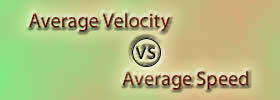Difference between Anxiety and Bipolar
Key Difference: Anxiety is a response to a stressor. It is a feeling of fear, unease, and worry. It can be rooted in any event that makes one feel frustrated, angry, or nervous. Bipolar disorder is a condition in which people experience extensive mood swings. A person may start of being happy and then go quickly to becoming sad or depressed.
Anxiety and Bipolar are two different types of medical conditions. Anxiety is the fear of certain situations or stress encountered during various circumstances, while bipolar is a disease that causes extensive mood swings. Though sometimes anxiety can occur in bipolar disorder, it is not always associated with that particular disease.

Anxiety is a response to a stressor. You feel anxious when you are stressed, for example when you have to take a test or give an interview, etc. Anxiety is a feeling of fear, unease, and worry. It can be rooted in any event that makes one feel frustrated, angry, or nervous. In small doses, it is healthy and useful, as it makes one alert and able to deal with the stressor. Usually when the stressor is removed or it is dealt with, the anxiety ends, sometimes it doesn’t, which can lead to anxiety disorders. There are various different types of anxiety including existential anxiety, test and performance anxiety, stranger and social anxiety, generalized anxiety, trait anxiety, choice or decision anxiety and paradoxical anxiety.
The most common symptoms of anxiety include a faster heart rate, skipped heartbeats, rapid breathing, cold sweat, nausea, trembling and dizziness. If the anxiety worsens, the symptoms may also include loose stools, frequent urination, dry mouth and problems swallowing. Feelings of anxiety are common in people who feel depressed and sad. Also, major life changes may bring on anxiety. These can include starting a new job or school, moving away, an upcoming marriage, having children, break-ups or divorce.

Bipolar disorder is a condition in which people experience extensive mood swings. A person may start of being happy and then go quickly to becoming sad or depressed. These mood swings are very fast and can happen in a couple of minutes. Bipolar disorder is equally common in men and women between the ages of 15-25 and there is no exact reason for the cause of this disorder, though it has been attributed to life changing situations, medications, lack of sleep and recreational drug use.
There are three types of bipolar disorder: Bipolar Disorder type I, Bipolar Disorder type II and cyclothymia. Bipolar type I is a disorder where people least one manic episode and periods of major depression. This type of disorder was previously known as maniac depression. Type II have never suffered a full mania, however they experience high energy levels and impulsiveness, causing to be happy and really excited (known as hypomania) at one time and sad and depressed a little while later. Cyclothymia is a mild form of bipolar disorder in which a person only experiences small mood swings which are not that dangerous. People with this form alternate between hypomania and mild depression.
The symptoms for bipolar disorder may last from minutes to days to months and include easy distraction, feeling of sleeplessness, poor judgment, loss of temper, reckless behavior or lack of self control (drug use, dangerous behavior, reckless driving, etc), very elevated mood (hyperactive nature, increased energy, etc), very involved in activities, easily upset or agitated, loss of appetite, fatigue or lack of energy, difficulty concentrating, loss of pleasure in activities, low self-esteem, suicidal thoughts, etc. These symptoms take more prominence in bipolar disorder type I and are present with a lesser intensity in the type II.
|
|
Anxiety |
Bipolar |
|
Definition |
Anxiety is a psychological and physiological state characterized by somatic, emotional, cognitive, and behavioral components. |
Bipolar is a psychotic disorder during which the patient exhibits excessive mood swings such as mania and depression. |
|
Symptoms |
Heart palpitations, tachycardia, muscle weakness and tension, fatigue, nausea, chest pain, shortness of breath, headache, stomach aches, or tension headaches. |
Symptoms differ depending on the person. However a constant and excessive mood swings are associated with bipolar. |
|
Causes |
According to recent studies, anxiety serves the purpose of increased vigilance regarding potential threats in the environment as well as increased tendency to take proactive actions regarding such possible threats. It is believed that a high amount of caffeine in a person’s body can cause or aggravates anxiety disorders. |
Bipolar disorder has been attributed to genetics, physiological and environmental factors. |
|
Types |
Existential anxiety, test and performance anxiety, stranger and social anxiety, generalized anxiety, trait anxiety, choice or decision anxiety and paradoxical anxiety. |
Bipolar I disorder, Bipolar II disorder, Cyclothymia and Bipolar disorder NOS. |
|
Treatment |
Avoid moving from one phase to another, avoid the need for a hospital stay, help the patient function as well as possible between episodes, prevent self-injury and suicide and make the episodes less frequent and severe. |
CBT, parental anxiety management, hypnotherapy treatments, herbal treatments, caffeine elimination and combined treatments. |
Image Courtesy: lsatfreedom.com, bruceandsallywitt.files.wordpress.com









Add new comment